Vitiligo: Latest Guideline Updates
M3 India Newsdesk Jun 25, 2024
Vitiligo, a skin condition causing depigmentation. Discover successful treatments for vitiligo, explore the latest guidelines and multimodality approach for managing this skin condition effectively.
Case report 1
Title: Segmental Vitiligo: Successful Repigmentation with Topical Tacrolimus
Abstract
We present the case of a 25-year-old female patient with segmental vitiligo affecting the right side of her face.
The patient had noticed depigmented patches on her cheek and forehead for the past six months. After a thorough examination and confirmation of the diagnosis, treatment was initiated with topical tacrolimus 0.1% ointment twice daily.
The patient was advised to apply the medication to the affected areas for a period of three months. Follow-up visits were scheduled every four weeks to monitor progress. At the end of the treatment period, significant repigmentation was observed in the affected areas, with an overall improvement in the patient's self-esteem and satisfaction. No adverse effects were reported during the treatment course.
Conclusion
Topical tacrolimus can be an effective treatment option for segmental vitiligo, especially in cases affecting localised areas such as the face. This case highlights the importance of early diagnosis and timely intervention to achieve satisfactory repigmentation outcomes in patients with segmental vitiligo.
Case report 2
Title: Generalised Vitiligo: Long-Term Management with Narrowband Ultraviolet B (NB-UVB) Therapy
Abstract
We report the case of a 40-year-old male patient with generalised vitiligo involving more than 30% of his body surface area.
The patient had a progressive course of the disease over the past five years, resulting in significant depigmentation on his face, trunk, and extremities.
Based on the patient's clinical presentation and disease activity, treatment with narrowband ultraviolet B (NB-UVB) therapy was initiated.
The patient received three weekly sessions of NB-UVB phototherapy, with a gradual increase in the dosage based on individual tolerance. After six months of treatment, there was noticeable repigmentation in several areas, including the elbows, knees, and hands.
The patient continued with maintenance therapy, receiving NB-UVB sessions twice weekly for a total duration of one year. During this period, the patient achieved substantial repigmentation over approximately 50% of the affected body surface area, leading to a significant improvement in his quality of life.
Conclusion
Narrowband ultraviolet B (NB-UVB) therapy can be an effective long-term management option for patients with generalised vitiligo. This case demonstrates the potential of NB-UVB phototherapy in achieving significant repigmentation and highlights the importance of regular maintenance sessions to sustain the treatment response over time.
Types of vitiligo

Assessment in vitiligo
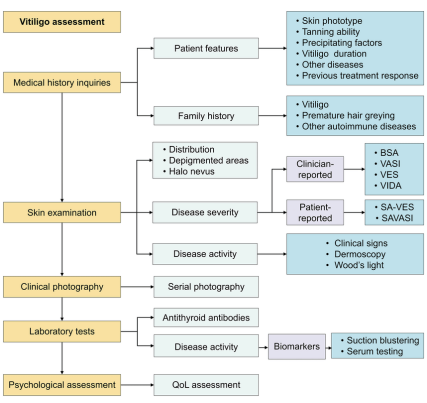
Management of vitiligo
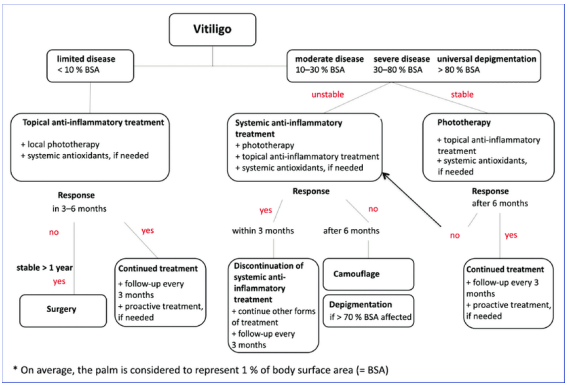
The management of vitiligo has seen some exciting developments in recent years, with the approval of new treatments and a better understanding of the disease. Here are some of the newer guidelines for the management of vitiligo in 2023:
- Topical treatments: Topical corticosteroids are still the first-line treatment for vitiligo, but new topical treatments are also available, such as ruxolitinib cream and taping of cream. These treatments can be effective in repigmenting the skin, but they may have side effects.
- Phototherapy: Phototherapy is a treatment that uses ultraviolet light to stimulate the production of melanin. Narrowband UVB is the most common type of phototherapy used for vitiligo, but other types, such as psoralen plus ultraviolet A (PUVA), may also be effective. Phototherapy can be effective in repigmenting the skin, but it may also cause side effects, such as skin irritation and tanning.
- Systemic treatments: Systemic treatments, such as methotrexate and cyclosporine, are sometimes used for vitiligo, but they are usually reserved for severe cases. These treatments can be effective in repigmenting the skin, but they also have serious side effects.
- Depigmentation: Depigmentation is a treatment that involves bleaching the unaffected skin to match the affected skin. This is a permanent treatment, so it is important to think carefully before deciding to undergo it.
In addition to these treatments, there are also a number of other things that people with vitiligo can do to manage their condition, such as:
- Protecting their skin from the sun: The sun can damage the skin and make vitiligo worse, so it is important to wear sunscreen and protective clothing when you are in the sun.
- Managing stress: Stress can trigger vitiligo, so it is important to find ways to manage stress, such as exercise, relaxation techniques, or counselling.
- Support groups: There are a number of support groups available for people with vitiligo. These groups can provide emotional support and practical advice on how to manage the condition.
The management of vitiligo is a complex issue, and there is no one-size-fits-all treatment. The best treatment for you will depend on the severity of your condition, your individual preferences, and your overall health.
Some of our cases treated with a multimodality approach
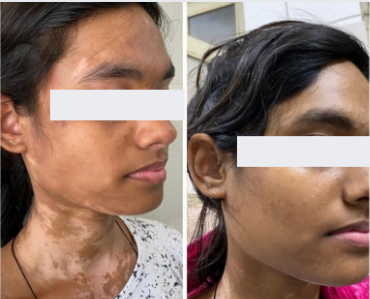

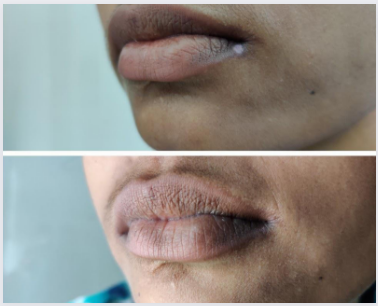
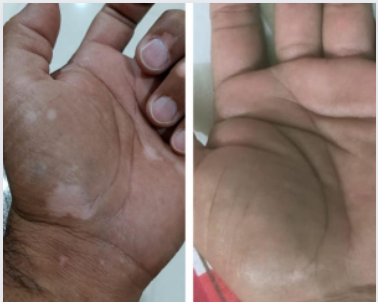
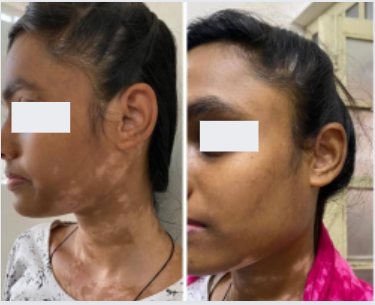
Disclaimer- The views and opinions expressed in this article are those of the author and do not necessarily reflect the official policy or position of M3 India.
About the author of this article: Dr Monica Gundecha is an MD (skin & VD) from Pune.
This article was originally published on 25th June 2023.
-
Exclusive Write-ups & Webinars by KOLs
-
Daily Quiz by specialty
-
Paid Market Research Surveys
-
Case discussions, News & Journals' summaries